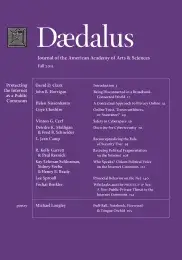Resisting Political Fragmentation on the Internet
Must the Internet promote political fragmentation? Although this is a possible outcome of personalized online news, we argue that other futures are possible and that thoughtful design could promote more socially desirable behavior. Research has shown that individuals crave opinion reinforcement more than they avoid exposure to diverse viewpoints and that, in many situations, hearing the other side is desirable. We suggest that, equipped with this knowledge, software designers ought to create tools that encourage and facilitate consumption of diverse news streams, making users, and society, better off. We propose several techniques to help achieve this goal. One approach focuses on making useful or intriguing opinion-challenges more accessible. The other centers on nudging people toward diversity by creating environments that accentuate its benefits. Advancing research in this area is critical in the face of increasingly partisan news media, and we believe these strategies can help.
It is fashionable to decry a growing fragmentation of political discourse in America.1 Gone are the days when Americans of all political stripes relied on a common set of media institutions; liberals and conservatives no longer read the same books or watch the same cable tv talk shows. But the best evidence so far, based on actual reader behavior, suggests that ideological segregation on the Internet is limited. Those who read conservative websites such as RushLimbaugh.com are more likely than the average Internet user to visit The New York Times online as well; similarly, visitors to liberal websites such as MoveOn.org are more likely than the average Internet user to visit the Fox News website, too.2 This phenomenon suggests, perhaps surprisingly, that for now online news consumption is less homogeneous than political dialogue within family or friend networks.
What will happen next? Legal scholar Cass Sunstein, among others, argues that the Internet will inevitably make fragmentation worse over time, as ever-narrower, more personalized channels allow people to see only the news and opinion stories they want to see.3 For example, readers can look to the online magazine Newsmax for a conservative slant on the news of the day, or to Slate for a liberal one. Even narrower channels could increase homogeneity still further. At the extreme, the news aggregator Digg.com, which has long selected front-page articles based on readers’ votes, now offers a personalized stream of only the articles a reader’s designated friends have voted for. The concern is that if readers choose to follow only like-minded friends, they may never see articles that challenge their preexisting opinions. In this essay, however, we turn the “personalization leads to fragmentation” claim on its head by arguing that personalization could instead be a crucial tool for resisting fragmentation.
. . .
